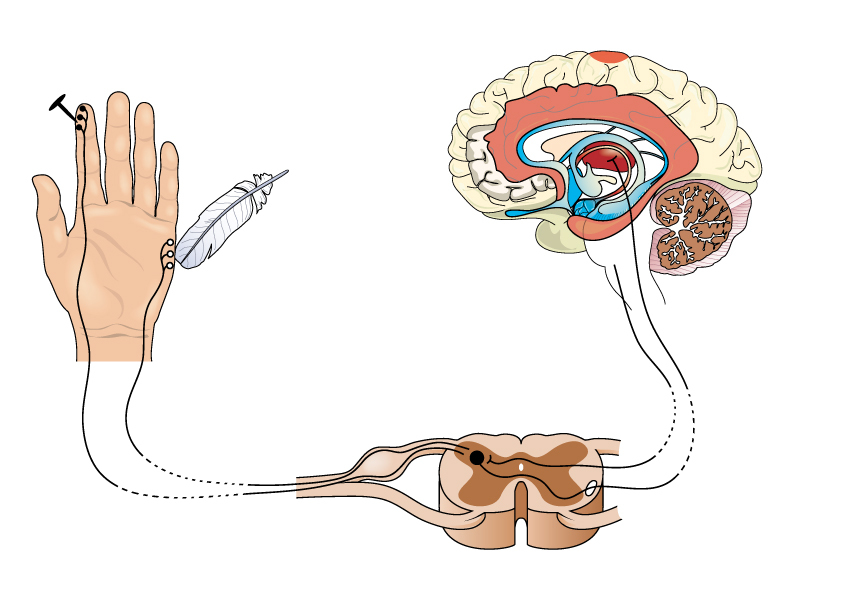This is the fifth and final blog in a new series discussing the 5 senses. This blog will focus on touch.
Mechanoception is our sense of pressure. It allows organisms to detect and respond to touch, sound, and changes in pressure in their environment. Mechanical stress, changes in pressure, sound waves, and gravity can stimulate mechanoreceptors, which can be found in blood vessels, the ear, and the skin.
There are 4 main types of mechanoreceptors: Meissner’s corpuscles, Merkel receptors, Ruffini endings, and Pacinian corpuscles.
Meissner’s corpuscles are located in the dermis, which is the second layer of the skin. They require constantly changing stimuli and are fast adapting. Meissner’s corpuscles can respond to very small skin indentations and are most sensitive to low-frequency vibrations.
Merkel receptors are specialized neurons that release neurotransmitters upon mechanical stimulation. They are found in the dermis of the skin. However, Merkel receptors respond to constant stimuli and are slow adapting.
Ruffini endings are sensory dendrites wrapped around elongated capsules. Like Merkel receptors, they are found in the dermis, respond to constant stimuli, and are slow adapting.
Pacinian corpuscles contain a nerve ending surrounded by connective tissue. They are found in the deepest layer of the skin called the hypodermis. Pacinian corpuscles respond to constantly changing stimuli and are fast adapting. They will only respond if there is a very rapid indent in the skin.
Love them without losing yourself. The Boom Health app helps you manage your loved one’s home care in one app. Download the app from the App Store or Google Play Store.
This article is not intended to be a substitute for professional medical advice or diagnosis. Always seek the advice of your physician or another qualified health provider with any questions you may have regarding a medical condition.





